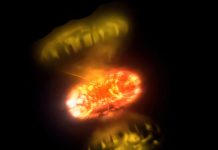
Launched in December 2013, ESA’s Gaia spacecraft aims to map over a billion stars in the Milky Way with incredible precision.
However, space is a dangerous environment, and recent events have tested Gaia’s resilience.
In April, a tiny particle smaller than a grain of sand, known as a micrometeoroid, struck Gaia at high speed. Gaia orbits 1.5 million kilometers from Earth at the second sun-Earth Lagrange point (L2), far from our planet’s protective atmosphere.
While impacts like this are expected, this particular particle hit Gaia at a high speed and a tricky angle, damaging its protective cover.
The impact created a small gap that allowed stray sunlight—about one billionth the intensity of direct sunlight on Earth—to occasionally interfere with Gaia’s sensitive sensors.
As Gaia’s engineers were addressing this issue, another problem arose. In May, the electronics controlling one of Gaia’s 106 charge coupled devices (CCDs) failed.
These sensors convert light into electrical signals and are crucial for Gaia’s “billion-pixel camera.” The failed CCD was vital for confirming star detections, and without it, Gaia began to register thousands of false detections.
The exact cause of the electronics failure is unclear. Gaia was initially designed for a six-year mission but has been operating for nearly twice as long.
Around the time of the failure, Gaia was hit by a powerful solar storm—the strongest in 20 years—that caused spectacular auroras on Earth. Although Gaia is built to withstand radiation, the current high solar activity has been challenging for its aging hardware.
The teams at ESA’s ESOC operations center, ESTEC technology center, and ESAC astronomy center, along with experts from Airbus Defense and Space and the Data Processing and Analysis Consortium, worked together to solve these problems.
Edmund Serpell, Gaia spacecraft operations engineer at ESOC, explained that Gaia typically sends over 25 gigabytes of data to Earth daily.
However, this amount would be much higher without the onboard software that eliminates false star detections.
“Both recent incidents disrupted this process, causing the spacecraft to generate many false detections that overwhelmed our systems,” said Serpell.
“While we can’t physically repair Gaia from 1.5 million kilometers away, we modified the software to better identify faint points of light as stars, dramatically reducing false detections.”
Thanks to the team’s hard work and collaboration, Gaia has returned to routine operations. During this unscheduled maintenance, engineers also refocused Gaia’s twin telescopes for the final time, resulting in some of the best quality data Gaia has ever produced.
Despite the challenges, Gaia continues its mission, providing valuable data to help us understand the universe better.



